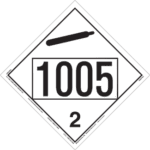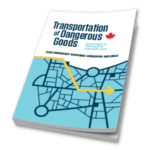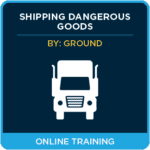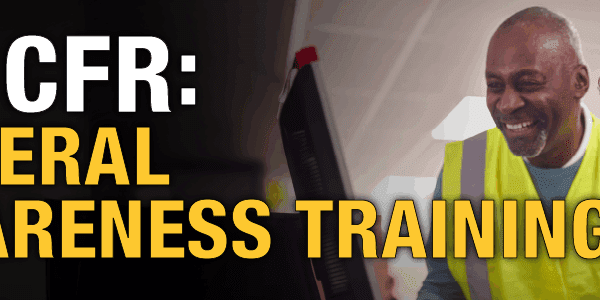This post was originally published in 2021 and has been updated for accuracy.

Know Your Exemptions: TDG’s Special Cases for the Agricultural Industry
The “special cases” found in Canada’s Transportation of Dangerous Goods Regulations (TDGR) encompass a wide range of functions. Some of them, like the “150 Kg Exemption” found in section 1.15 are used by most of the public at some time, even if they’re not aware they’re doing so. Other exemptions are targeted at very specific sectors – the military, say, for section 1.20, “National Defence” or section 1.50, the “Hot Air Balloon Cylinder Exemption,” which is mostly useful, as you might expect, for those engaged in the sport of ballooning. If you’re engaged in farming, you’ll have several special cases which make it easier to haul supplies to the farm even if you’re not a certified dangerous goods handler or receiver.
Agriculture: 1,500 kg Gross Mass Farm Vehicle Exemption, section 1.21
Section 1.21 is the first of these special cases. It applies to the “handling, offering for transport or transporting of dangerous goods on a road vehicle licensed as a farm vehicle,” so rules out third-party carrier deliveries. Licensing of farm vehicles is normally a provincial responsibility – for example, Ontario’s rules include that you must make at least $7,000 annually by farming, so that means this won’t work for a “hobby farm” in your back yard. (Although in that case, you can probably get all you need under the 150 Kg Exemption.)
However, if the goods are transported on a licensed farm vehicle, the shipment will be exempted from Part 3 (Documentation), Part 4 (Dangerous Goods Safety Marks), Part 5 (Means of Containment) and Part 6 (Training). This will allow the farmer or farm worker to pick up dangerous goods such as fertilizers or pesticides and transport them back to the farm without having to have dangerous goods training although they must understand the restrictions on this exemption, such as that it is restricted to no more than 1,500 kilograms per vehicle.
Why else is this exemption useful? Well, it allows you to carry dangerous goods other than gases in non-certified packaging, as long as the packaging is “designed, constructed, filled, closed, secured and maintained so that under normal conditions of transport, including handling, there will be no accidental release of the dangerous goods that could endanger public safety.” Gases will still require certified cylinders that meet the requirements of Part 5. The vendor doesn’t have to put any safety marks on the packaging (although having them wouldn’t be considered “misleading”), and no dangerous goods shipping documents need to be provided (unless an Emergency Response Assistance Plan, or ERAP, is required, in which case a document containing the ERAP information must be provided.) Even though the shipment may exceed 500 kilograms, no placards are required on the farm vehicle.
Other than that, the restrictions on this special case include:
- The goods must be intended to be used (or have been used) by a farmer for farming purposes;
- The dangerous goods are transported solely on land;
- The total distance along public roads does not exceed 100 kilometres; and
- The dangerous goods do not include Class 2.1 Flammable gases in containers exceeding 46 L (slightly larger than a typical 40-pound propane tank), Class 1 Explosives (other than Division 1.4S), Class 2.3 Toxic Gases, Class 6.2 Infectious Substances or Class 7 Radioactive Materials.
So, in effect, this allows farmers using their own farm vehicles to purchase up to 1.5 metric tonnes of agricultural chemicals and drive them home without worrying about hazard communication, packaging standards or dangerous goods training, as long as they purchase them at outlets within 100 kilometres of their farm. However, they are still responsible for spill reporting as covered in Part 8 of TDG, and for obtaining a dangerous goods shipping document whenever an ERAP applies.
Agriculture: 3,000 kg Gross Mass Farm Vehicle Exemption, section 1.22
Section 1.22 effectively doubles the amount that can be carried on the farm vehicle to 3,000 kilograms. However, this exemption can only be used for transportation on land between a retail place of purchase and place of destination. It’s sometimes called the “retail exemption” by inspectors in the farming sector. The maximum distance on public roads is less than or equal to 100 km. Otherwise, the provisions for what you’re exempted from and the restricted classes are almost identical, with one major exception. This exemption doesn’t exempt you from Part 6, Training. So, a farmer or farm worker could use their farm vehicle to accept up to three tonnes of dangerous goods for the farm, but they would have to have dangerous goods training and be able to show a training certificate if necessary.
Agriculture: Pesticide Exemption, section 1.23
Pesticides get a special exemption all to themselves in section 1.23. This allows the transport of one large means of containment with a capacity up to 6,000 Litres on a road vehicle without dangerous goods documentation (Part 3), training (Part 6) or UN numbers on the placards. The large means of containment must be used to prepare the dangerous goods for application or to actually apply the dangerous goods, such as a tank attached to a sprayer.
Although the driver carrying the pesticide doesn’t require dangerous goods training, the large means of containment will still require placards, since the exemption only mentions that you are not required to display the UN number as per section 4.15. You will still be limited to transport for a distance not exceeding 100 km, and you must provide a dangerous goods document with ERAP information when an ERAP is required under Part 7.
Agriculture: Anhydrous Ammonia Exemption, section 1.24
Anhydrous ammonia (UN1005) is a toxic gas that can be used as a fertilizer in the spring and fall. It can be stored as a pressurized liquefied gas and pumped into the soil using special tractor-drawn equipment, where it quickly dissolves in soil water to form ammonium ions. These ammonium ions are easily absorbed by plant roots to meet the plant’s need for nitrogen for biosynthesis. Since ammonia gas can be fatal if inhaled, such treatments should only be carried out with strict safety precautions. However, Transport Canada has provided some regulatory relief when bulk containers of ammonia are transported to farms.
Section 1.24 exempts the movement of anhydrous ammonia for field application from documentation (Part 3) and Part 7 (Emergency Response Assistance Plans) as long as:
- Transport is solely by land;
- The distance travelled on public roads doesn’t exceed 100 km; and
- The ammonia is in a large means of containment that doesn’t exceed 10,000 Litres.
Note that section 4.18.2 gives an option for placarding these field application tanks in a way that can make the application look a little less alarming. Option (a) allows large means of containment to be placarded following the normal placarding rules – this would require tanks to display the Class 2.3 placards with “1005” in the centre on all four sides. However, Option (b) allows the use of the special “anhydrous ammonia placard.”

This placard shows a black cylinder in place of the skull design for normal toxic gases. While it still indicates the material is toxic to emergency responders, it limits the alarm seeing such a product might cause when spotted being applied to foodstuffs.
As expected, this placard must be displayed on all four sides of the container. In addition, on at least two sides of the container, the words “Anhydrous Ammonia, Inhalation Hazard” or “Ammoniac anhydre, dangereux par inhalation” must be displayed in letters
- at least 6 mm wide and 100 mm high in the case of a tank car,
- at least 4 mm wide and 25 mm high in the case of a portable tank, and
- at least 6 mm wide and 50 mm high in the case of all other large means of containment.
Note that this symbol is only used as a placard. Non-bulk cylinders will still require the Class 2.3 symbol for transport.
Other Helpful Special Cases
Of course, farmers are free to use any of the special cases that aren’t limited to specific groups. For example, section 1.46, Miscellaneous Special Cases, gives exemptions for chemicals that may have agricultural uses, such as fish meal and ammoniating fertilizer solutions with low absolute pressures.
Special Provision 37, Schedule 2, gives an exemption for the common fertilizer ammonium nitrate (which uses several UN numbers – this special provision applies to UN1942 and UN2067). This provision exempts you from dangerous goods documentation (Part 3), safety marks (Part 4) and training requirements (Part 6) if:
- The fertilizer is transported by road vehicle;
- It is purchased by retail sale and transported between any of the following places:
- the place of purchase,
- the place of use or consumption, or
- the purchaser’s place of residence;
- The total quantity of fertilizer in the load does not exceed 13.6 metric tonnes; and
- The shipment is accompanied by a record sheet that includes the shipping name, the UN number and the quantity of the dangerous goods or mixtures or solutions of them.
Whenever you use TDG’s special cases, make sure that you read them in full and follow the details carefully. In the case of the agricultural exemptions, ensure that you stay within the 100 km limit many of them require, and if necessary, pick up your products in licensed farm vehicles. However, the relief given for things such as training certification and shipping documents can make the lives of Canada’s farmers much easier.
Are you carrying dangerous goods for special purposes, and wonder if you might be able to use a special case? The Regulatory Experts at ICC Compliance Center can help you determine your transport needs. Contact us here at 888-442-9628 (U.S.) or 888-977-4834 (Canada) and get on the road quickly!
Stay up to date and sign up for our newsletter!
We have all the products, services and training you need to ensure your staff is properly trained and informed.
 TDG Publications TDG Publications |
 Anhydrous Ammonia Placards Anhydrous Ammonia Placards |
 Shipping Dangerous Goods by Shipping Dangerous Goods byGround Training Courses |
Sources:
Transport Canada, “Transportation of Dangerous Goods Regulations”
The Fertilizer Institute, Anhydrous Ammonia Factbook: Awareness and Training for First Responders
Government of Alberta, Dangerous Goods and the Agricultural Industry






 ICC USA
ICC USA ICC Canada
ICC Canada